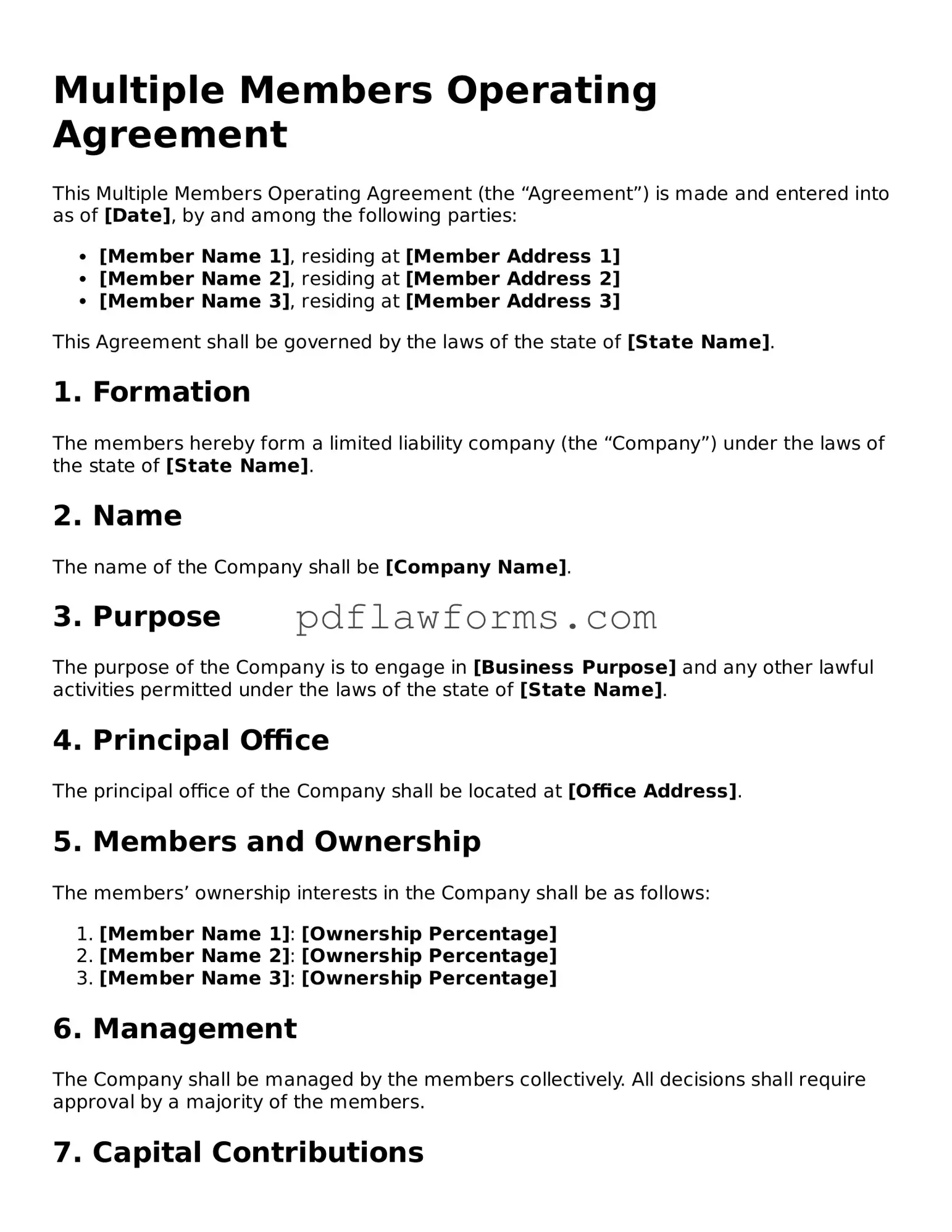When filling out a Multiple Members Operating Agreement form, individuals often make several common mistakes that can lead to confusion or legal issues down the line. Understanding these pitfalls can help ensure that the agreement is completed correctly and serves its intended purpose.
One frequent mistake is failing to clearly define the roles and responsibilities of each member. Each member’s duties should be outlined in detail to prevent misunderstandings. If these roles are vague, it may lead to disputes among members about who is responsible for what.
Another common error is neglecting to specify the percentage of ownership each member holds. This information is crucial, as it determines how profits and losses are shared. Without this clarity, members may have different expectations regarding their financial interests in the business.
People also often overlook the importance of including a buy-sell agreement. This clause outlines the process for a member to sell their interest in the company. Without it, the remaining members may face challenges if one member wishes to exit the partnership.
Additionally, many individuals forget to address how decisions will be made within the organization. It's essential to establish a voting process or decision-making framework. If this is not clearly defined, it could lead to gridlock or conflict when important decisions need to be made.
Some people mistakenly assume that the operating agreement is a one-time document. In reality, it should be reviewed and updated regularly to reflect changes in the business or membership. Failing to do so can result in outdated provisions that no longer serve the members’ interests.
Another mistake is not including a provision for resolving disputes. Having a clear process for conflict resolution can save time and money in the event of disagreements. Without this, disputes may escalate and harm the business.
People may also forget to include provisions for the addition of new members. As businesses grow, new members may join. It’s important to outline how this process will work to ensure a smooth transition.
Lastly, some individuals fail to have the agreement reviewed by a legal professional. This oversight can lead to significant issues if the agreement does not comply with state laws or fails to address specific needs of the business. A legal review can help identify potential problems before they become serious.
By being aware of these common mistakes, individuals can take the necessary steps to create a well-structured Multiple Members Operating Agreement that serves the best interests of all parties involved.
